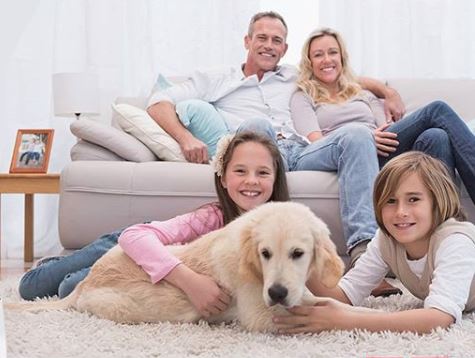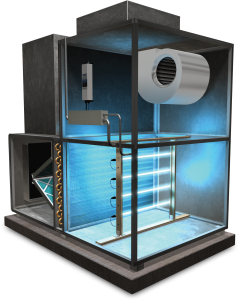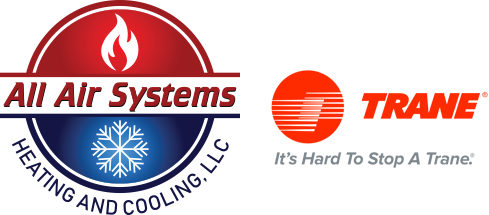Getting more “fresh” air from outside can be good or bad, depending on where you live. In most cases, the air outside will be significantly better than the air in your home. On the other hand, the air in some cities can be even worse than the air in poorly ventilated homes.
Either way, getting fresh air indoors is important—and you may have heard about UV lights as a possible solution. Does it work? Or is it just another one of those cheap gimmicks you see on TV infomercials?

The Environmental Protection Agency (EPA) has a word or two to say about it. In recent statements, this organization has cited indoor air pollution as a significant health risk for Americans, and has listed UV lights as an effective way to clean up your indoor air.
In short, the EPA tells us that the answer is yes: UV lights can improve your home’s air.
Coronavirus and HVAC: How can UV lights and air filters help?
Viruses are roughly 100 times smaller than bacteria, and typically range from 0.004 to 0.1 microns in size. This means even the best, most efficient air filters wouldn’t necessarily clear the air of viruses.
A PCO UV light will kill microbes and destroy airborne viruses as well as clean surfaces.
UV light, particularly UVC, destroys viruses, bacteria, and mold by damaging their DNA and RNA, so they can’t multiply, however, the exposure to the light isn’t long enough to do so. A PCO UV light mounted in the airstream relies on creating hydrogen peroxide to clean the air and surfaces.
A catalyst in a PCO UV light reacts with moisture in the air to create hydrogen peroxide. The hydrogen peroxide created by the UV light settles on surfaces and continues to kill microbes.
Hydrogen peroxide is the safest disinfectant around. It’s been used by the medical community for 170 years.
So how does it work?
There are many microorganisms and contaminants (mold, bacteria, other organic compounds) which do not like UV light. In fact, they die when exposed to a sufficient amount of it.

Fortunately, however, that type of UV light can be generated by special lights installed in your HVAC systems. It’s a combination of technologies that circulate purifying UV rays throughout your home’s air and render the environment inhospitable to unwanted contaminants—yet perfectly hospitable to people and pets.
UV lights don’t work as well on their own. It’s best to combine them with a good quality air filter and have them professionally installed to work in tandem with your existing HVAC appliances. The EPA states that UV lights are not a standalone solution for indoor pollution, but are a very effective component of your clean indoor air strategy.
One of the main reasons for this is that UV lights, while fatal to microorganisms, do not actually purify or freshen the air by removing impurities such as dander, dust or tiny microorganisms that have succumbed to the power of UV light. That’s why a good quality air filter is needed. We need a way to kill the microorganisms (UV light), but also a way to freshen and purify the air (filters, ventilators, air conditioners, etc.).
When an ultra-violet system is used correctly and installed to the manufacture’s guidelines, it can prove to be a useful tool. Ultra-violet exists in natural sunlight (it’s why we wear sunscreen, and mold grows under a rock), it disassembles the DNA of organics. It reduces them to nitrogen and oxygen. Ultra-violet is most effective as surface irradiation (with a limited “kill zone”) and is used in many applications. It is used to sterilize medical instruments, clean reclaimed water in treatment plants, saltwater aquariums, and is used in food processing.
Seeing the light
UV lights are a safe and effective technology. They will be used more and more as more people wake up to the risks of indoor air pollution, and the solution that UV lights represent. Many HVAC specialists already offer high quality UV lights, and are able to expertly install them as a part of your existing HVAC system.
The result? Cleaner, fresher, healthier air for you and your family.
